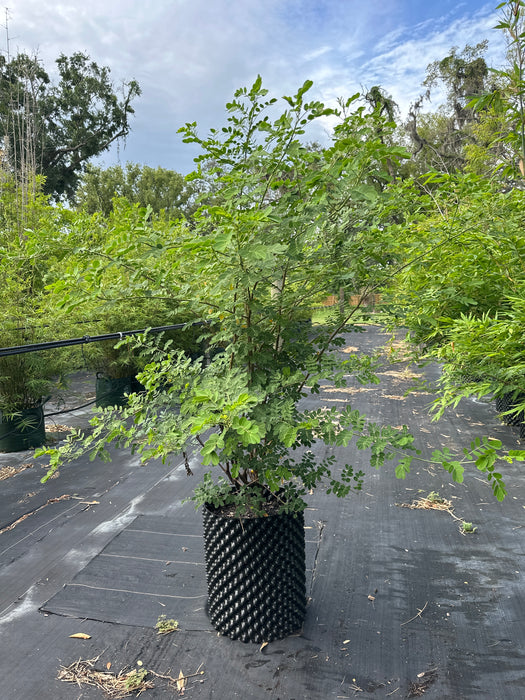
Cassia Tree Yellow
Cassia Tree Growing Guide
-
Best Growing Environment
-
Cassia trees thrive in tropical and subtropical climates.
-
They grow best in well-draining soil, including sandy or loamy types, and tolerate slightly alkaline to slightly acidic pH.
-
These trees prefer warm, humid environments and are drought-tolerant once established.
-
Ideal for landscape planting, ornamental use, and pollinator gardens, especially in warmer regions.
-
-
Botanical Name
-
Cassia fistula (Golden Shower Tree) — most commonly referenced Cassia species in ornamental horticulture.
-
-
Common Names
-
Golden Shower Tree
-
Indian Laburnum
-
Amaltas
-
Purging Cassia
-
-
Average Height and Diameter
-
Height: 30 to 40 feet at maturity
-
Canopy Spread: 25 to 35 feet wide
-
It forms a rounded, spreading canopy with graceful arching branches.
-
-
Growth Rate
-
Moderate to fast growth rate, averaging 2 to 3 feet per year under optimal conditions.
-
-
Sun Requirements
-
Requires full sun to flourish — at least 6 to 8 hours of direct sunlight daily.
-
Limited flowering occurs in partial shade.
-
-
Cold Hardiness
-
Hardy in USDA Zones 9b to 11.
-
Sensitive to frost; foliage may be damaged at 32°F (0°C), and sustained temperatures below 30°F (-1°C) may kill young trees.
-
Needs protection or container growing in areas prone to cold snaps.
-
-
Water Requirements
-
Moderate water needs, especially during the first 1–2 years after planting.
-
Once established, it becomes drought-tolerant, though occasional deep watering encourages better flowering.
-
Avoid overwatering; prefers dry to moderately moist soil.
-
Detailed Fertilizing Guide
-
Use a balanced slow-release fertilizer such as 10-10-10 or 12-6-6.
-
Fertilize 3 times per year:
-
Early Spring (March): Start the growing season with a full dose to support leafing and flowering.
-
Early Summer (June): Apply a second round as flowering peaks or begins.
-
Late Summer (August): A lighter dose to support late-season growth and prepare for dormancy.
-
-
Apply around the drip line, not directly against the trunk, and water well after each application.
Planting Guide
-
Best Planting Time: Early spring or fall in warm climates.
-
Site Selection: Choose a location with full sun and ample space for canopy spread.
-
Hole Preparation: Dig a hole twice as wide and just as deep as the root ball.
-
Backfill with native soil mixed with compost or organic matter.
-
Water thoroughly after planting and mulch to retain soil moisture and reduce weeds.
-
Staking may be necessary for young trees in windy locations.
-
Prune lightly in early spring to shape and remove dead or crossing branches.
USDA Zone
-
Best suited for USDA Zones 9b–11
-
Performs well in southern Florida, southern Texas, southern California, and coastal regions with minimal frost risk.
-
In cooler climates, it can be grown in large containers and moved indoors during cold months.
-
The Cassia tree is prized for its brilliant yellow blooms, adaptability to heat, and minimal maintenance once mature. With the right care and placement, it offers stunning ornamental value and benefits to pollinators and tropical landscapes.


